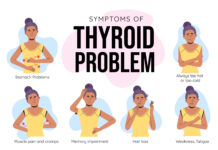Dr. Sangeeta. V. Budur, Consultant pediatrics and PICU, ASTER R V HOSPITAL, BANGALORE
Cow’s milk protein allergy (CMPA) is the most common food allergy in babies. Though cow’s milk protein allergy (CMPA) is increasingly being diagnosed in the Western countries, there is scanty data from India. The incidence of CMPA is estimated to be 2-7.5% in the first year of life.
As cow’s milk is part of staple diet in Indian mothers and babies it is important to create awareness about CMPA and recognize and treat early to avoid serious consequences. Let’s try to understand and address a few frequently asked questions.
ALSO READ: IIM Kozhikode, TimesPro launch 16th batch of Executive Post Graduate Programme in Management
What are common myths about cow’s milk feeding in children?
If you believe that feeding cow’s milk is as good as feeding breast milk and it’s better than artificial milk formulas then you are absolutely wrong. Breast milk is always superior and it is your child’s birth right. The American Academy of Pediatrics recommends introducing cow’s milk only after 1 year of age with continued breastfeeding till 2 years of age. Before your child is 1 year old, cow’s milk may put him or her at risk for various complications. It also has too many proteins and minerals which may cause harm to your baby’s kidneys.
Why is it that only my child is allergic to cow’s milk unlike all other babies and what causes it?
CMPA occurs when your baby’s immunological system abnormally reacts to a protein in the cow’s milk and some other animals’ milk like goat, sheep. That means there is an underlying genetic susceptibility for animal protein.
How common is CMPA and who is vulnerable to develop it?
The incidence is as high as 15% in some studies under 1 year of age and the risk decreases as children get older, occurring in less than 1% of children 6 years and older. Family history of asthma, eczema or any allergic disease puts the child at risk for CMPA.

What will happen if symptoms are not addressed immediately? The infant can develop recurrent wheezing and is prone for respiratory tract infections, can develop recurrent eczema not responding to medications in usual manner, there can be growth failure, and the child may not gain weight as expected. Babies can develop severe anemia due to blood loss in stools and iron deficiency.
Whether breast fed babies are also prone for CMPA?
Yes, if the mother is consuming dairy products which is quite normal, the protein passes into the breast milk and the baby manifests symptoms of CMPA. But the incidence of CMPA is significantly less – 0.5% compared to formula feed babies. Breast milk is definitely protective against CMPA.
When should you contact your child specialist?
Trust your instincts, the moment you feel your child is not well, especially when your child is under the age of 1 year, consult the pediatrician. It is important to recognize the importance of diagnosing CMPA correctly because wrong diagnosis leads to unnecessary elimination of diet in babies and breast-feeding mothers. According to a study, the prevalence of a real food allergy in general is less than what is perceived by parents. e.g.: 35% of children younger than 2 years were labeled by their parents as having a reaction to food (most commonly milk).

How is CMPA diagnosed?
Basically, it is a clinical diagnosis. Usually, your doctor suggests eliminating dairy products from the diet, both for mother and the baby. Simultaneously rules out other diseases (especially infection) which mimic CMPA. Once the symptoms disappear (may take up to 2 weeks), your doctor might suggest reintroducing the dairy products what we call as oral challenge and recurrence of symptoms indicates possibility of CMPA. Apart from these your doctor might suggest to perform a few blood investigations/ allergy tests which helps in diagnosis.
What is the treatment for CMPA?
Treatment of CMPA includes removing cow’s milk protein from your child’s diet. (Including mother if baby is on breast milk). Usually started with formulas made from broken-down proteins (hydrolyzed formulas/ amino acid based), which are easily digested. But babies who develop symptoms within 2 hours of consumption need immediate attention (severe wheezing, extensive rashes, sometimes anaphylactic shock) and child should be brought to the hospital as they need emergency drugs to be administered intravenously.
This year educate yourself and develop your career with EasyShiksha









































































